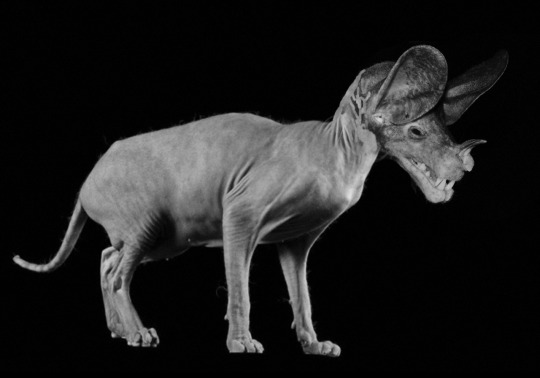#c m koseman
Note
Speaking of dinosaurs have you heard of CM Kosemen he has alot of series about dinosaurs like "dinosauroids"
I only just looked up his stuff now, but tbh I just love the lore behind dinosauroids. I appreciate Koseman's take on dinosauroids bc he's right, the original imaginings of dinosauroids is way too biased towards a human design.
But this? Simon Roy and Koseman are massive brained for this one

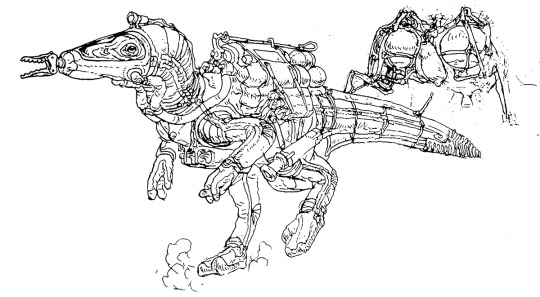

56 notes
·
View notes
Text
can't describe how excited i am for the All Tomorrows remake that is being done by C. M. Koseman. All Tomorrows was/is such a huge inspiration for the current direction my art practice is going. I'm so excited to see how the book will change with C. M. maturing and developing as an artist.
#he wrote it when he was like a teenager or something#and now he has a good handful of really well fleshed out books under his belt#so i feel like its going to take an already intensely fascinating world and give it so much more polish and life
26 notes
·
View notes
Note
Love your funky little dinosaur drawings!!!!! Theyre super inspirational! Do you have any places you get references? I want to draw more dinos but sometimes its hard to find references.
Thank you!! I’m sorry I don’t post art of them more often, I still draw silly Dinos but I often forget to photograph my other work. For my references, oog, I’m gonna be frank I have a bad habit of constantly drawing from memory, which is probably why 90 percent of my dino art are theropods haha. Otherwise I usually find good references in artists that deal primarily with skeletal reconstruction art, it’s the best way to find something up to date. I also take a lot of inspo from miscellaneous artists/persons in the paleofield like Nix Draws, C M Koseman, Darren Naish, etc.
13 notes
·
View notes
Text
Conceptos clavé
Evolución especulativa / Zoología Especulativa: La evolución especulativa es un subgénero de la ciencia ficción que se enfoca en explorar y especular sobre la evolución futura de las especies, tanto en la Tierra como en otros planetas. Este tipo de narrativa se sumerge en posibles cambios genéticos, adaptaciones biológicas y transformaciones evolutivas que podrían ocurrir a lo largo del tiempo. A menudo, los autores de evolución especulativa se basan en conceptos científicos actuales para construir mundos donde la evolución es el motor principal de la trama, proporcionando una perspectiva fascinante sobre cómo podrían evolucionar las formas de vida en escenarios imaginarios. Algunos ejemplos de autores del subgenero son: Dougal Dixon, C. M. Koseman y Dylan Bajda.
Ecología Alienígena / Alien Biosphere: El subgénero de la zoología especulativa "Alien Biosphere" se centra en la imaginación y la conceptualización de ecosistemas, organismos y formas de vida que podrían existir en otros planetas o entornos extraterrestres. En lugar de estudiar la vida real, los científicos y escritores especulan sobre cómo podría ser la vida en condiciones muy diferentes a las de la Tierra. Esto implica pensar en las posibles adaptaciones, anatomías y ciclos vitales de criaturas que podrían habitar mundos alienígenas.
Organización de tiempo geologico: Las organizaciones del tiempo geológico son divisiones cronológicas que los geólogos utilizan para estudiar y clasificar la historia de la Tierra. Incluyen eones, eras, períodos, épocas y edades, y se basan en eventos geológicos significativos y cambios en la vida biológica a lo largo del tiempo.
Convergencia Evolutiva: Un concepto común en la evolución especulativa que sugiere que diferentes especies pueden evolucionar de manera independiente para ocupar nichos ecológicos similares, lo que resulta en características físicas y comportamientos convergentes.
Taxonomía: El sistema de clasificación biológica, conocido como taxonomía, utiliza una jerarquía de categorías para organizar y clasificar a los seres vivos en grupos cada vez más específicos. Aquí están las categorías principales en la jerarquía taxonómica, desde la más amplia hasta la más específica:
1. Dominio: En la taxonomía, el dominio es la categoría más amplia y general que se utiliza para clasificar a los organismos. Los tres dominios principales en la tierra son Bacteria, Archaea y Eukarya, pero en Atlas son Bacteria, Archaea, Eukarya y Parakarya. Cada dominio engloba a grupos más específicos, como reinos, y se basa en diferencias fundamentales en la estructura celular y la composición genética de los organismos.
2. Reino: El reino es la categoría más amplia en la taxonomía. Los seres vivos se dividen en varios reinos, como Animalia (animales), Plantae (plantas), Fungi (hongos), etc. Cada reino incluye organismos que comparten características fundamentales similares.
3. Filo (o división en el caso de las plantas): El filo es una categoría que sigue al reino y agrupa a los organismos en función de similitudes más específicas en su anatomía y evolución. Por ejemplo, el filo Chordata incluye a todos los animales con notocordio, como los vertebrados.
4. Clase: La clase es una categoría que sigue al filo y agrupa a los organismos en función de similitudes aún más específicas en su anatomía y evolución. Por ejemplo, la clase Mammalia incluye a todos los mamíferos.
5. Orden: El orden sigue a la clase y agrupa a los organismos en función de similitudes aún más específicas en su anatomía y comportamiento. Por ejemplo, el orden Carnivora incluye a carnívoros como leones, tigres y perros.
6. Familia: La familia sigue al orden y agrupa a los organismos en función de similitudes más cercanas en su anatomía y genética. Por ejemplo, la familia Felidae incluye a los felinos, como leones, tigres y gatos.
7. Género: El género es una categoría que sigue a la familia y agrupa a los organismos en función de similitudes aún más cercanas. Los organismos en un género comparten características más específicas. Por ejemplo, el género Panthera incluye a los grandes felinos, como leones, tigres y leopardos.
8. Especie: La especie es la categoría más específica en la taxonomía y representa un grupo de organismos que pueden reproducirse entre sí y producir descendencia fértil. Cada organismo se identifica por un nombre binomial que incluye el nombre del género y el nombre de la especie, como Panthera leo (león) o Homo sapiens (ser humano).
9. Subespecie: Una subespecie en taxonomía es una subdivisión de una especie que presenta ciertas diferencias distintivas pero que, en general, comparte características comunes con la especie principal. Se utiliza para clasificar poblaciones de una especie que tienen variaciones geográficas, morfológicas o genéticas notables, pero que aún son lo suficientemente similares como para considerarse parte de la misma especie. La designación de subespecies ayuda a reflejar la diversidad dentro de una especie y es parte de la clasificación biológica jerárquica.
5 notes
·
View notes
Text
Chapter ???
Before April 1st becomes April 2nd, and in the spirit of #BeautifulCorpses , I wanted to present to you a fine example of #NotFakeScience #AprilFools !
Folks, meet what once was considered a very early member of the Homo genus: Homo diluvii testis !
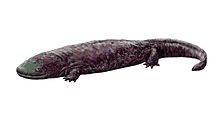
Yeah, so... It’s known now to have been a giant Miocene salamander, dubbed Andrias scheuchzeri. An early representative of the species including the Chinese giant water salamander, amongst others.
But when it was first uncovered in 1726, Swiss physician Johann Jakob Scheuchzer believed a man looked at him from the rock - its name literally translated to “Man, witness of the Deluge”.

Perhaps it could be compared to the Piltdown Man in England, in that it took a lot longer than what’d be normal for someone to call bullshit - 32 YEARS. That’s like an entire generation of people figuring that this was a person.
From there, it flip-flopped from consideration as a catfish, a lizard, and finally a salamander - but never again a man. And thank God, honestly.

Some have claimed that, given the fragmentary appearance of the fossil, it could’ve been mistaken for a VERY destroyed human skeleton... though I wonder how much Mr. Scheuchzer might’ve been kidding, or at least not been serious...
I mean the guy was a DOCTOR
The lack of serious thought might’ve been endemic to the science at the time. For another example of this, we can point to the first dinosaur fossil ever discovered and described in Western science, Scrotum humanum.

(to whit: this was a piece of a leg bone of Megalosaurus, the first dinosaur described as such in the science. In a world where the first name managed to stay...)
I’ll close with this incredible interpretation by C. M. Koseman for “All Yesterdays”, of what a humanoid with A. scheuchzeri’s proportions would’ve *really* looked like...

Happy #AprilFoolsDay everybody!!! Hope you enjoyed this brief #NotFakeScience adventure
#beautifulcorpses#BeautifulCorpses2019#BeautifulCorpses2020#april fools#april fool's day#Not Fake Science#homo diluvii testis#Andrias scheuchzeri#giant salamander#andrias#not a hominin#not even a hominid#early paleontology#Johann Jakob Scheuchzer#miocene paleontology#piltdown man#c.m. koseman#cm kosemen#all yesterdays#scrotum humanum#megalosaurus#paleontology#it be like that sometimes
5 notes
·
View notes
Note
All tomorrows?
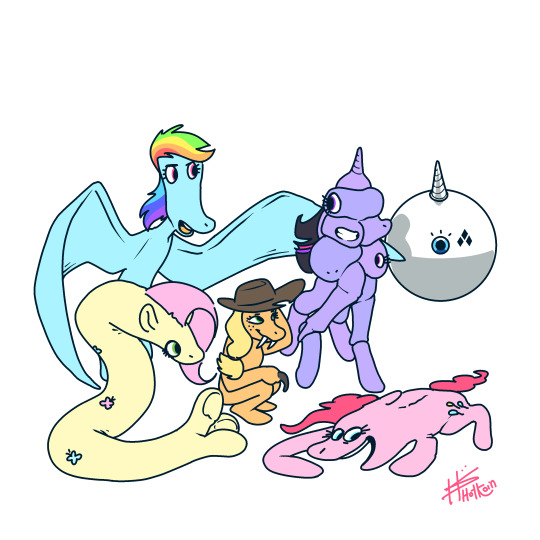
My Little Tomorrows
#pony#concept#fantasy#design#scifi#all our tomorrows#c m koseman#mlp#my little tomorrows#my little pony#mane 6#twilight sparkle#pinkie pie#rainbow dash#applejack#fluttershy#rarity
2K notes
·
View notes
Note
Have you anything by C. M. Kosemen?
Indeed, I have a collection of their mutant cat-bats right here.

20 notes
·
View notes
Text
Book Review: The Cryptozoologicon by John Conway, C M Koseman and Darren Naish

While this blog, Dracones Mundi, is reviewing books which helped me research dragons in mythology and folklore, I shall also review this book about cryptozoology, creature design and speculative evolution. The Cryptozoologicon does not have a major focus on dragons or reptiles, but it is a good read for fans of ‘cryptids’ (animals which are not proven by science but are theorised to exist as a way to explain unusual sightings and phenomena – Loch Ness Monster, Chupacabra, Bigfoot etc.)
I would argue that the most famous book published by Irregular Books by John Conway, C M Koseman and Darren Niash is All Yesterdays, a book about palaeoart and its limitations or advantages. The most famous aspect of All Yesterdays are the drawings of modern animals in the style of paleoart, that is, modern animals where the skin is wrapped close to the bone and feathers and fur are replaced by scales, which make them excellent nightmare fuel (you’ve probably seen the terrifying swans on the internet at some point). All of these authors and artists are famous in their own right; John Conway and Darren Niash run the Tetrapod Zoology blog, and CM Koseman is well known in speculative evolution circles as someone who draws weird aliens.
The Cryptozoologicon is a good look at cryptozoology. None of the authors are ‘cryptozoologists’ in a sense that involves going out into the world with nets and cameras to try and find monsters, but Darren Naish could be considered a ‘cryptozoologist’ based on how much he studies cryptids in a sceptical manner – his latest book ‘Hunting Monsters’ is an analysis of cryptozoology. This is a book written by sceptics, so if you only want to read a book which affirms the animals are real then you may not enjoy the tone of this book.
For me, the book is a delight. I love speculative evolution, so a book entirely about analysing non-real creatures and adding realistic theories to them is very cool. Each chapter as three sub-chapters, almost like a transition from ‘not real’ to ‘if it was real’. The first section is by far the most useful in researching cryptids; it’s the background information, the legends, the alleged sightings of the animal. The next section is a little discussion; why is this animal not real, why are similar animals real, and the first ideas of what the animal could be in a more fantastic world – a marsupial bunyip, mbielu-mbielu-mbielu as a bichir fish, a chevrotain (mouse-deer relative) kelpie, etc.
The book is short, and only covers 28 cryptids (of which the ‘dragony ones’ which might interest the Dracones Mundi readership are the Row, Bunyip, Zuiyo Maru Creature, Mbielu-Mbielu-Mbielu, Cadborosaurus, Tizheruk, Buru, Hoop Snake, Minhocão, Gambo and Con Rit), but it is very educational and enjoyable despite it’s short length.
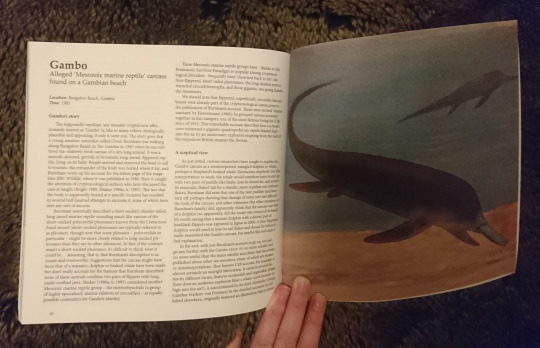
The book is not intended to say “these animals are probably this…”, it is not intended to explain phenomena that people experience when they see a cryptid. One of the reasons I believe the book has such a negative tone towards cryptozoology is to make absolutely certain that the authorial intent is not lost – Naish, Conway and Koseman clearly enjoy monster concepts and creature design, and they clearly had a lot of fun in researching, writing and illustrating this book, and despite the frequent bemoaning of inconsistent or nonsensical eyewitness accounts of cryptids the book does read as a fun and exciting look at these animals. Less “oh no people are stupid for believing in the gorilla man” and more “Bigfoot is a great concept and my bigfoot design is based on Gigantopithecus”.
Links!
Tetrapod Zoology: http://tetzoo.com/
C M Koseman: http://cmkosemen.com/
Book Depository: https://www.bookdepository.com/Cryptozoologicon-I-John-Conway/9781291621532 (£25)
Amazon: https://www.amazon.co.uk/Cryptozoologicon-I-John-Conway/dp/1291621539/ref=sr_1_1?adgrpid=53613599952&gclid=CjwKCAiAluLvBRASEiwAAbX3GTgmcFGwsaZQ6fq3ZwaFKEqyKXTVf1ScocqGSgo-Tg1ZCl_SQlmvmBoC6vEQAvD_BwE&hvadid=259062823340&hvdev=c&hvlocphy=1007390&hvnetw=g&hvpos=1t1&hvqmt=e&hvrand=7198852457447555094&hvtargid=kwd-302016314598&hydadcr=24402_1748874&keywords=cryptozoologicon&qid=1576621937&s=books&sr=1-1 (£25 paperback, £5.99 kindle)
#Book Reviews#Cryptozoology#Research#C M Koseman#Darren Naish#John Conway#Cryptozoologicon#the font on the front cover is very cool but also utterly unreadable
4 notes
·
View notes
Text
Big Announcement: My legal name has been officially changed!!!
I am 100% Ezra from this day forth! Needless to say, I fucking celebrated ❤️
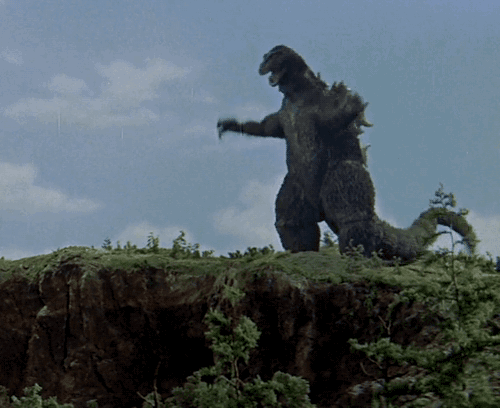
#*nomming pizza* dish ish da besht day evah!#feral: *using his mattress like a trampoline* woohoo!#(also shoutout to C. M. Koseman’s All Tomorrows bc that book literally saved my fucking life a few days ago)#things are genuinely looking up and I’m so happy about it#I’m a man y’all
6 notes
·
View notes
Text
The Qu's facial structure reminds me of anomalocarids. I wonder if that was intentional on C. M. Koseman's part?
12 notes
·
View notes
Text

It is time for me to introduce you to my greatest spec creation ever, Daniel. I drew this last year but I still wish to show you him
(Inspired by c m koseman’s snaiad species)
Daniel’s planet’s “plants” are a large mold like organism that he and other organisms feed on. It’s hard to say if it’s a plant or animal, but I’ll call it more plant like for now. I will draw it more later. Daniels tail spikes are more of a random thing I added, to be honest. Daniels related species are mainly quadrupedal and his stumpy arms are merely the result of his previous generations not needing to use them anymore. Future daniels will most likely loose them. His “tentacle” is more of a feeler that I took inspiration from the creatures of Snaiad (not my creation), it is often lubricated mildly to be able to slide in and out of a pouch, but the tip is somewhat soft and rigid. It is used to aid in his consumption of the moss so he may pick it up into his mouth. Although, it is a lot more dexterous than most other species, and some daniels sometimes manipulate their surroundings in other ways besides feeding. They are very social creatures, and use their feelers to touch each other as communication. But what mainly happens between two of them comes from the “strawberry”, red fleshy lump, on its skull. It is highly sensitive and can change color depending on the health of the daniel. When two daniels meet, they touch their strawberries together. This lets each other get a brief overview on the health and mental well being of the other, which lets them know how to react to them accordingly. It is not depicted here, but a Daniel has an extravagant tongue like structure it can inflate when it opens its mouth. It is used to attract mates. This is all I have for now
#intelligent species#species concept#speculative biology#speculative evolution#xenobiology#daniel#my artwork#original species#original character
31 notes
·
View notes
Photo
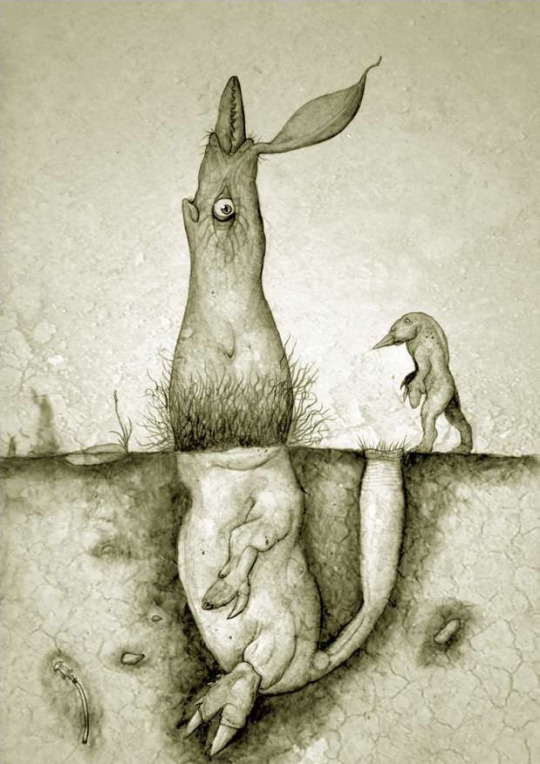

Future humans designed by Nemo Ramjet for All Tomorrows, a book in the tradition of Man After Man.
#nemo ramjet#c m koseman#all tomorrows#alltomorrows#future evolution#speculative evolution#creature#monster#evolution#biology#genetic engineering#science fiction
46 notes
·
View notes
Photo
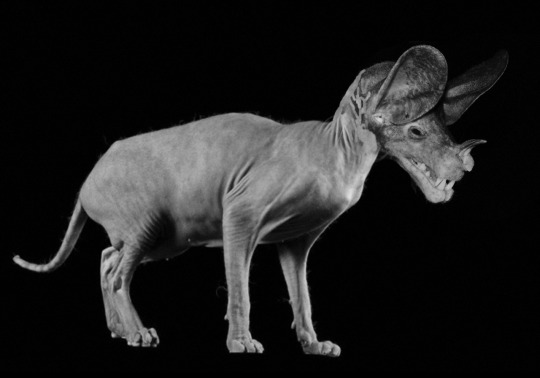
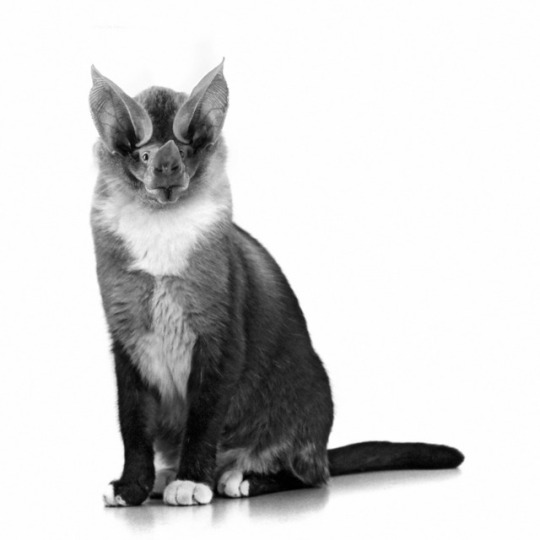

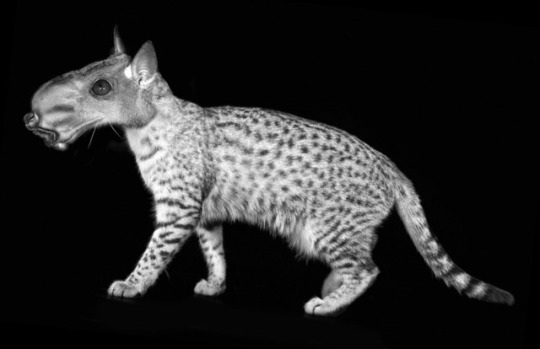


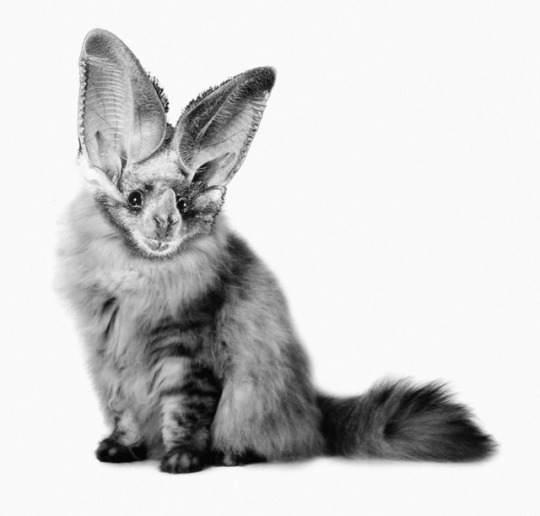
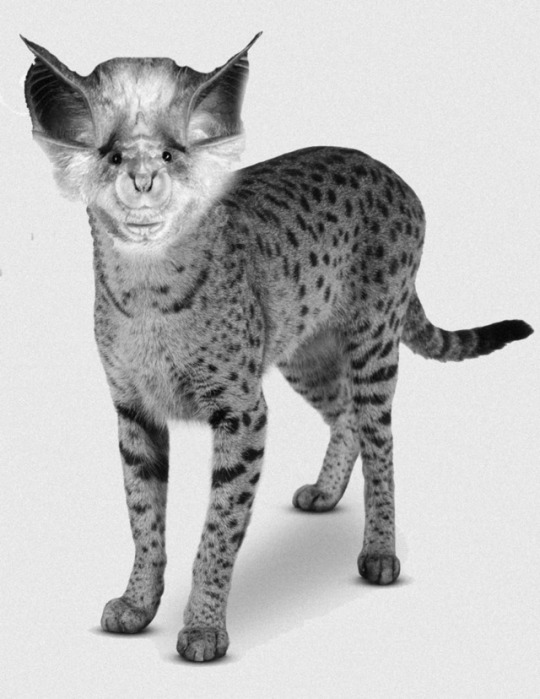
Lifelike renders from the books of naturalist C. M. Koseman
44 notes
·
View notes
Text
The PDF That Saved My Life - Why I Love “All Tomorrows” With All My Heart
(Content Warning: Discussions of trauma, suicidal ideation and sexual abuse)
*clears throat* So, as some of you may be aware, the past few weeks haven’t been easy, not in the least. I was struggling with serious suicidal urges and feeling extreme anguish towards my own body and soul. I believed myself to be tainted, filthy and all manner of destructive and negative things.
The reason behind this breakdown was due to the realisation that I had experienced sexual harassment and assault multiple times throughout my life, including an occasion last year in which I was groped by an immediate relative. I had been aware of the incident since it happened, but was in denial. I was thinking “It couldn’t have been that bad, right?” But after trying unsuccessfully to repress it, I had to face the facts that she did what she did. I was heartbroken and I’m still deeply saddened by the realisation. Everything just seemed to fall apart and I psychologically imploded, plummeting into a dark pit of worthlessness and childlike sorrow. I felt as if I had been thrown into a mental oubliette; just tossed away and forgotten about on every level. Whenever I wasn’t bawling my eyes out and grieving my lost innocence, I was stress-eating and lying in bed, feeling nothing. Every now and then, I’d receive a short burst of energy, but nothing substantial, and the feelings remained.
Despite all of that, though, I didn’t want to die. A small part of my mind wanted to hold on and ride out these waves of suicidal thoughts. But I also knew I shouldn’t have to be going through this cycle of building up and breaking down, so I finally managed to seek professional help. There’s another thing that also pushed me towards seeking help and eventually guided me out of this dark place, and that’s the work of science fiction I mentioned in the title. All Tomorrows by C. M. Koseman (I hope I’ve spelled that right).
I don’t remember exactly how I came across it, but I think it was the video by Alt Shift X on YouTube that did it. As you can imagine, my dark thoughts weren’t only directed towards myself, but the world at large. I was wondering how life could be so cruel as to let something so horrific happen to me. I saw the thumbnail of that video and I didn’t know what it was. I had vaguely heard of All Tomorrows, but was more familiar with the much more nihilistic Dougal Dixon book Man After Man, and as such I got the two confused. I clicked on the All Tomorrows video, barely paying much attention and dismissively thinking: “oh great another sci-fi dystopia that predicted humanity’s inevitable downfall”.
What that video showed me absolutely blew my mind. As I discovered C. M. Koseman’s intricate worldbuilding science fiction project, I became fascinated and enthralled by the journeys and evolutions of the various post-human species, from the fun-loving Satyriacs and the mellowed out Snake People, to the bloodthirsty Killer Folk and the horrifying Bone Crushers. Yes, many of the stories were very, very sad. The Mantelopes lost everything and devolved because intelligence was so painful. The Striders, Titans and Temptors were all wiped out before they had the chance to truly reach their full potential. The Qu and Gravitals, one could say, ruined everything. But what truly amazed me was the fact that many, many of these stories also contained great happiness.
The Colonials, for example, suffered through the kind of torture that I wouldn’t wish on the Devil himself. Being wedged together into a wall of flesh bricks, all while retaining intelligence. And yet, they managed to turn into the beautiful Modular People and create a utopian society. Yes, the Killer Folk are traditionally violent, but the ones that made the biggest progress were the ones that chose peace over war. The Satyriacs started off as the mindless Hedonists, but were able to use their intelligence to appreciate every moment of their joyful lives. The lowly Worms became the comfort-loving Snake People, always able to appreciate the little things in life. The flattened Lopsiders rose up from the ground and became the proud, tall Asymmetric People. The list goes on, but you get my point.
The point is, even though this future humanity went through the sort of Hell that makes the past few years look tame by comparison, they always managed to rise up. Sure, nothing was ever quite the same again, but they managed to make something new and wonderful out of that. When you cut an orange, you may not have a whole fruit anymore, but you have lots of slices that can be shared with everyone. The best thing you can do is move forward. The future will always hold something better for you, even if that seems impossible. Don’t be afraid to reach for it. The final quote of this incredible piece of sci-fi wiped away the remnants of dark still clinging to me: “Love today and seize all tomorrows.” To me, that meant “Be a kind soul and you can achieve anything.”
This entire story ignited a strong feeling of empathy within me; an emotion I thought I was too traumatised to ever properly feel or express again. I think that was the point. Sure, the many strange post-humans may not look like us, but we cannot deny that they are human and that brings out the best in us. We shouldn’t be afraid to show empathy for our fellow humans. Thinking lowly of what collectively proves to be our best quality, claiming we’re “above” it and aiming to become “bigger than” everything else deprives us of our humanity. Empathy, compassion, love, that’s what makes us truly powerful. If we can learn to love today, the utopian future we all dream of will finally be ours.
Love is something that, from an early age and for over half my life, I was never truly given. But that doesn’t mean I can’t give it to others. Just as the post-humans were able to move forward and rise from the ashes, I fully intend to do the same. I’m safe now. The people who hurt me are gone from my life and will never hurt me again. I’m surrounded by loving friends, in a city I love, attending a university I love, receiving the therapy I need to heal and soon to be medically transitioning too. Even though I still struggle to accept it, I’m learning to love myself as well. I think that’s the greatest love someone can ever feel. If I continue to love each today that comes, all the tomorrows will be brighter and brighter.
And to think this all started because of a PDF about the hypothetical future of humanity. I’m determined to hold on no matter what. Idk if C. M. Koseman uses tumblr or any other social media for that matter, but if he comes across this somehow, I just want to say “Thank you from the bottom of my heart. I wouldn’t be here today without All Tomorrows.”
https://youtu.be/-WIk29qtrIo
youtube
(PS: I know I have stumbled and made mistakes on my platform as well. I’m still a little bit unsteady after being in such a dark mental state for so long. I’m sorry about that. I am doing better. Thank you all if you made it this far. I love and appreciate every single one of you.)
#arwen speaks#tw: abuse#tw: suicidal ideation#tw: trauma#all tomorrows#personal philosophy#Youtube#science fiction#the future#empathy#the power of love#queue
72 notes
·
View notes

